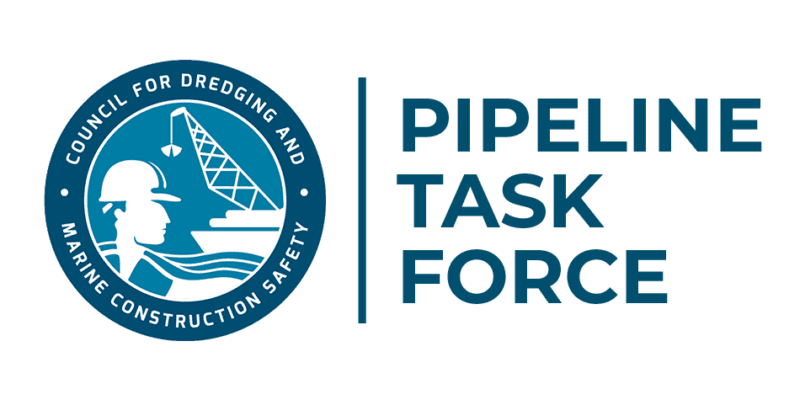 Today, the Council for Dredging and Marine Construction Safety (CDMCS) released Pipeline Incident Prevention, a recommended best practices guide for safe dredging near underwater gas and hazardous liquid pipelines located in U.S. Army Corps of Engineers federal navigation channels. This completes a milestone project for the dredging and pipeline industries that will raise awareness and ultimately save lives.
Today, the Council for Dredging and Marine Construction Safety (CDMCS) released Pipeline Incident Prevention, a recommended best practices guide for safe dredging near underwater gas and hazardous liquid pipelines located in U.S. Army Corps of Engineers federal navigation channels. This completes a milestone project for the dredging and pipeline industries that will raise awareness and ultimately save lives.
In September of 2018, the CDMCS Pipeline Task Force (PTF) set out on a journey to reduce underwater pipeline incidents during dredging activities by delivering solutions that support safe work practices and increase public awareness through inter-agency public/private collaboration and information-sharing. This life-saving resource delivers on that promise with recommendations fully vetted by all stakeholders: dredging contractors, pipeline operators, the U.S. Army Corps of Engineers, the National Oceanic and Atmospheric Administration, the Pipeline and Hazardous Materials Safety Administration, and various state agencies.
The “PIP” does not eliminate the challenges with working around underwater pipelines, but it does help contractors navigate around them and reduce risk. It addresses pipeline safety, damage prevention, and recommended emergency response protocols in the marine environment and should be utilized both in the field and in the office.
Crewmembers and shore-side management will benefit from the many following topics: understanding pipelines and their operators, understanding dredges and their operators, notifying 811 One Call, obtaining accurate pipeline coordinates and ownership information from the various federal and state databases, identifying pipeline leaks and knowing how to respond, effectively collaborating and communicating with all parties, ensuring pipeline avoidance, and implementing advance planning three months prior to project start. At the end of the guide, there is also a complete federal, regional and state regulatory agency point-of-contact list covering all states on the West Coast, Gulf Coast and East Coast from Florida to Massachusetts. Additionally, there is a PIP Hazard Mitigation Checklist that covers preventative steps prior to working near underwater pipelines and steps to take in the event of a pipeline leak.
“Today, we are delivering an extremely valuable safety resource to the public and have designed it for active use in the field,” says Michael Gerhardt, Managing Director of the CDMCS and PTF Director. “Any contractor that dredges or performs marine construction operations in the vicinity of underwater pipelines should consult this best practices guide and share it deep within its company at all levels of management.”
“What is exceptional about this guide, ” Gerhardt continues, “is that it was developed not only by professionals working in the industry but also by professionals regulating the industry. This 360 stakeholder involvement shaped a first-of-its-kind best practices guide that the CDMCS is very proud of.
I would personally like to thank all the members of the PTF – the dredgers, pipeliners, and federal/state agency staff – for their knowledge, time and patience. Fifteen months ago we all agreed that the dredging and pipeline industries lacked mutual best practices for preventing pipeline incidents, and then we all agreed to do something about it. Well, I’m proud to say that we did exactly what we said we were going to do and in the timeframe we said we’d do it.
The PTF, however, does not stop here. It will continue its good work and meet again in the summer to discuss new initiatives.”
The PIP and Hazard Mitigation Checklist are available for download and production at https://cdmcs.org/underwater-pipeline-resource-center/
The PIP comes in two sizes (Letter 8.5 x 11.0 and Pocket 6.25 x 9.25), while the Hazard Mitigation Checklist is formatted for one size – 4.5 x 11.0. Both were designed to be double-sided. If you are not a member of the CDMCS, please review this link for booklet creation directions. A limited number of hard copies will be provided to CDMCS members at upcoming CDMCS Meetings.
CDMCS members designed the PIP to augment companies’ health, safety, and environmental practices, not to replace them or create an obligation on them. Furthermore, it doesn’t supersede any local, state or federal law, regulation, ordinance or policy.
Article available on DredgeWire.com.

